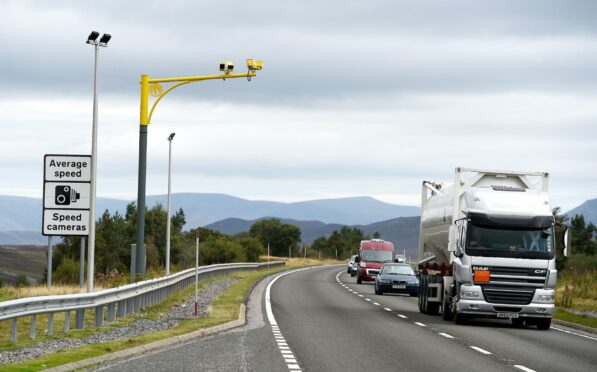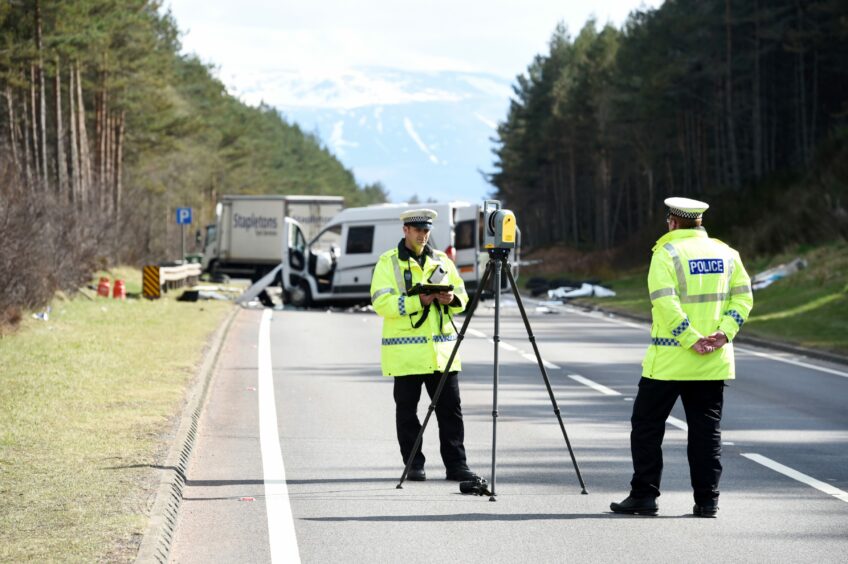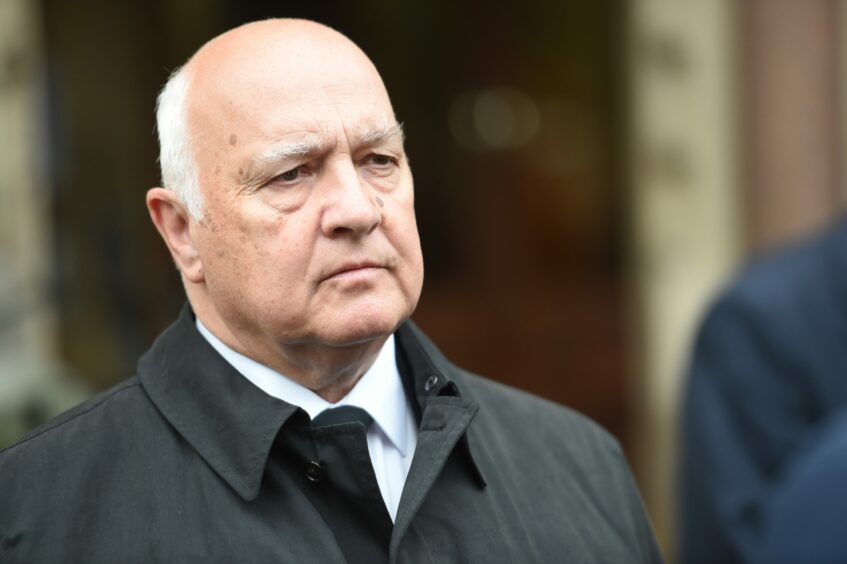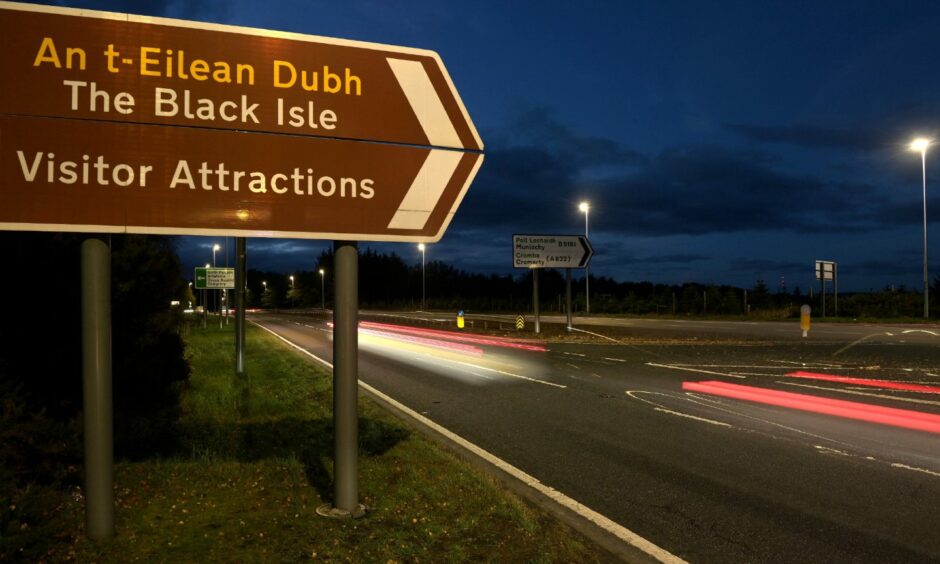Nearly 3,000 people have been caught speeding on the A9 in just four years, new figures have revealed.
The A9 Perth to Thurso road has become notorious for serious accidents, with repeated calls to dual the stretch to save lives.
Average speed cameras were installed on the 136-mile stretch between Inverness and Dunblane in 2014.
But mobile speed cameras – which Police Scotland’s Safety Camera Unit use in areas of most in need of “road casualty reduction” – have caught 2,958 drivers flouting the law between January 1, 2019 and mid-December 2022.
Of those, 2,727 were caught on the Perth to Inverness stretch.
Campaigners say the figures show the average speed cameras – hailed at the time of installation as “vital” to improving driver behaviour – are doing nothing to improve safety.
They have now renewed their calls for the A9 to be dualled.
‘Make a substantial impact: dual the road’
Chris Cade, from the A9 Dual Action Group, said: “Our point of view is that the cameras have made little impact and these figures can in no way compensate for the exponential loss of life that we are still witnessing.”
Local representatives have also stepped up their lobbying on the issue.
In 2022, 13 people were killed on the A9 Inverness to Perth stretch – making it the deadliest year since 2010.
In just three months, eight people – including a two-year-old boy and his grandparents – died on the 25-mile stretch between Slochd and Newtonmore.
Since 2011 – the year the Scottish Government pledged to dual the A9 by 2025 – a total of 59 lives have been lost.
Councillor Bill Lobban said dualling the A9 is the best way of improving safety.
Mr Lobban said: “People should be sticking to the speed limit. In a lot of cases, you spend more time looking at the speedometer these days than you do on the road.
“I think the only way, as far as I am concerned, to make a substantial impact on the fatalities is to dual the A9 from Perth to Inverness.”
Improvements are a ‘drop in the ocean’
Current plans state the A9 dualling will be completed by 2025. However, only two of the 11 sections have been completed so far.
Calls have been made for the Scottish Government to revise its timeline, but this has not yet been done.
In November, Transport Minister Jenny Gilruth said she had met with police to “better understand the increase in fatal accidents and the underlying contributing factors”.
She said at the time: “Every death on the A9, and on any of Scotland’s roads – is one too many.”
Traffic Scotland is now investing £5 million in additional road safety measures for the A9 until 2025.
An immediate investment of £600,000 for improvements to the route by April 2023.
But Badenoch and Strathspey councillor Mr Lobban said: “I think the latest tinkering around the edges, the money that has been announced to upgrade some of the markings and junctions, is welcome but it’s only a drop in the ocean. The road will not become properly safe until it’s dualled from one end to the other.”
‘We will take action’
Meanwhile, police have vowed to continue cracking down on speeders – describing them as a top priority.
Superintendent Stewart Mackie, from the roads policing team, said: “Targeting speeding is a priority for Police Scotland. Officers routinely carry out enforcement activity to deter speeding and detect those who choose to break the law.
“Travelling at inappropriate speeds is proven to be a significant factor in fatal and serious injury collisions. This can be avoided if motorists take road safety seriously by paying attention to speed limits and the prevailing road, weather and traffic conditions.
“We will take action against anyone found to be causing an offence.”
A Transport Scotland spokesman said: “Road safety is of paramount importance to the Scottish Government. Safety cameras are deployed where they have the greatest potential to reduce injury collisions and where there is evidence of both collisions and speeding”.
“Since 2007 we have invested £300m in the maintenance and safety of the A9, plus a further £3.6m on average speed cameras on the route. Through targeted camera enforcement and improving driver behaviour, the Scottish Safety Camera Programme can contribute to Scotland’s road safety vision and targets.”














Conversation